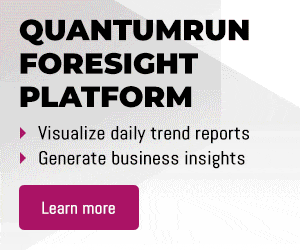Pharmacovigilance: Automating drug surveillance
Pharmacovigilance: Automating drug surveillance
Pharmacovigilance: Automating drug surveillance
- Author:
- April 21, 2025
Insight summary
Artificial intelligence (AI) is rapidly analyzing reports and identifying risks in medicine and vaccine production, enabling faster responses to potential side effects. While this shift improves efficiency, it also raises concerns about accuracy, trust, and the role of human oversight in making critical safety decisions. Governments, businesses, and healthcare professionals may need to adapt to new regulations, workforce changes, and ethical challenges as AI takes on a larger role in pharmacovigilance.
Pharmacovigilance context
Pharmacovigilance ensures the safety of medicines and vaccines after their approval for use. It involves systematically detecting, assessing, and preventing adverse drug reactions, which remain a leading cause of morbidity and mortality worldwide. The US Food and Drug Administration (FDA) alone receives nearly two million reports annually through its Adverse Event Reporting System, highlighting the immense scale of this surveillance effort. Beyond traditional monitoring, pharmacovigilance is especially vital in managing infectious diseases, where the rapid deployment of new treatments and vaccines requires continuous safety assessment to maintain public trust and efficacy.
As the pharmaceutical industry deals with an increasing volume of safety reports, artificial intelligence (AI) is emerging as a tool to enhance pharmacovigilance efficiency. AI can rapidly process Individual Case Safety Reports, which serve as early indicators of drug-related risks, allowing faster identification of potential safety concerns. The FDA’s Emerging Drug Safety Technology Program aims to facilitate discussions with industry and academia on applying AI to pharmacovigilance, particularly in automating report processing and analyzing vast datasets. However, human oversight remains essential, as AI models may overlook complex cases that require expert judgment, such as assessing the causality of adverse events.
Pharmacovigilance is also expanding its role in lower- and middle-income countries, where infectious diseases and antimicrobial resistance pose significant public health challenges. Many of these regions rely on large-scale drug distribution but lack sufficient safety data, as most pharmacovigilance studies are conducted in high-income nations. Strengthening regulatory frameworks, enhancing reporting systems, and integrating mobile health technologies can help bridge this gap.
Disruptive impact
Patients may receive faster responses on drug safety, reducing the risk of harmful side effects. Additionally, AI-powered chatbots and virtual assistants could analyze reported symptoms and determine whether a reaction warrants medical attention. However, automation could also lead to concerns about trust, as individuals may feel uneasy relying on AI-generated safety assessments rather than human professionals. Clear communication and transparency about AI’s role in drug safety will be essential to maintaining public confidence.
Pharmaceutical firms could process vast amounts of safety data more quickly, leading to faster decision-making on drug recalls or label updates. However, smaller companies with fewer resources may struggle to adopt AI systems, potentially widening the gap between large corporations and smaller players. Additionally, errors in AI-driven safety reports could expose companies to liability risks, especially if automated systems fail to detect serious adverse reactions. Businesses may need to balance AI’s efficiency with human oversight to avoid reputational and financial damage.
Governments may face new regulatory and policy challenges as AI becomes central to drug safety monitoring. Health agencies may need to establish guidelines on AI accountability, ensuring that safety decisions are based on reliable data. International collaboration may also become more important, as AI-driven pharmacovigilance systems process reports from multiple countries. Additionally, governments in lower- and middle-income countries may struggle to implement AI-based monitoring due to infrastructure limitations, potentially leaving gaps in global drug safety. Ultimately, investments in training and regulatory frameworks will be key to ensuring AI supports, rather than weakens, public health initiatives.
Implications of pharmacovigilance
Wider implications of pharmacovigilance may include:
- Drug safety monitoring becoming more efficient, leading to fewer medication-related hospitalizations and improved public health outcomes.
- AI reducing the workload for healthcare professionals, allowing them to focus on complex cases instead of routine safety report reviews.
- Companies investing more in AI-driven drug surveillance, shifting budgets away from manual safety monitoring and regulatory compliance costs.
- Governments establishing new laws to balance AI-driven efficiency and patient data privacy, leading to stricter regulations for pharmaceutical companies.
- Drug recalls happening more quickly as AI identifies safety risks sooner, reducing the financial and legal impact of delayed regulatory actions.
- The demand for AI specialists and data scientists in the pharmaceutical industry growing, shifting job opportunities away from traditional safety monitoring roles.
- AI-driven safety monitoring influencing consumer behavior, making patients more cautious about medication side effects based on real-time data updates.
- Automated safety assessments creating concerns about algorithm bias, requiring regulators to develop new evaluation methods to ensure fairness in drug safety decisions.
Questions to consider
- How could AI-driven drug safety monitoring change how you trust and interact with medications in the future?
- What challenges might smaller pharmaceutical companies face in keeping up with AI-driven safety regulations?
Insight references
The following popular and institutional links were referenced for this insight:



